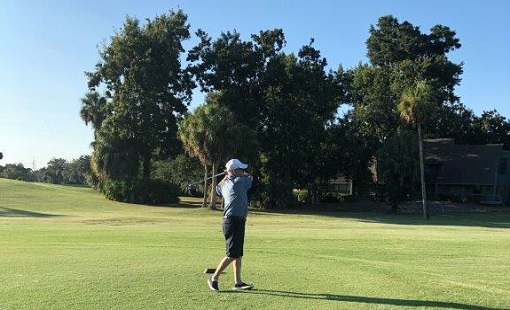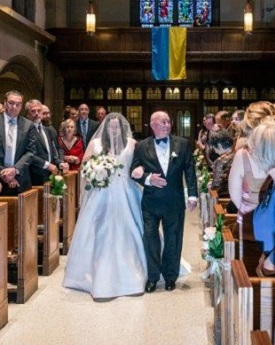A New Lease on Life

Lung Donation Gives Belair Resident a Second Chance
Jim McComiskey, 76, didn’t have much longer to live when he came to the University of Maryland Medical Center (UMMC) to see pulmonologist Robert Reed, MD.
“His diagnosis was interesting, as he was told he had chronic obstructive pulmonary disorder (COPD) and that his condition had been somewhat perplexing to his prior physicians because his lung function was pretty good, but his breathing was limited,” explained Dr. Reed, professor of medicine and medical director of the University of Maryland Lung Transplant Program. “He actually had both emphysema and fibrosis, conditions where the lungs become damaged and scarred. This results in really bad lungs, with a lot of lung function numbers that are misleadingly reassuring.”
Dr. Reed knew that Jim’s condition was one that carried a very high probability that he would die within a year or two. Combined emphysema-fibrosis doesn’t respond well to treatments intended for COPD or for fibrosis. “It’s often complicated by pulmonary hypertension but doesn’t respond well to treatments for pulmonary hypertension, either,” Dr. Reed added. “He also had very poor quality of life, and had been in a downward spiral for some time, without ability to do many of the things he previously enjoyed.”
Jim, who had retired about four years before the transplant, spent most of the day lying down, eating and napping. He was not as sharp as he used to be due to his low oxygen levels. “We knew we had no choice but to get him on the transplant list, it was a do or die situation,” said Jim’s wife Carmel McComiskey, who is employed by UMMC as director of nurse practitioners and physician assistants, patient care services.
 Jim had type B blood, which is rare, and his donor would need to be that blood type as well. He was placed on the list in May 2021 and received the call over Memorial Day weekend that there were lungs. He had his double lung transplant on June 1.
Jim had type B blood, which is rare, and his donor would need to be that blood type as well. He was placed on the list in May 2021 and received the call over Memorial Day weekend that there were lungs. He had his double lung transplant on June 1.
Jim spent the next four weeks in the hospital being cared for by many specialty teams, including transplant, ICU, step down, APPs, nursing, rehab and respiratory. Since it was during the pandemic, his family was not able to visit together with him, but they could visit separately. They were supported by everyone.
“All of my employees, co-workers and the entire staff of the hospital were there for me and ready to lend a hand any way they could,” added Carmel. “Jim was in the best of hands; I trusted everyone and was able to go home at night.” After his hospital stay, Jim spent 13 days at the University of Maryland Rehab Institute, where he learned to walk again and improve his cognitive function, as he had some mental confusion, common when a patient is in the ICU, while in the hospital. He then went home and has been doing great.
Dr. Reed explained that the hospital’s lung transplant program has a long tradition of putting the patient first. “We look at the individual holistically to see whether a transplant will help them, and if there is something other than transplant that can help them – we work just as hard to serve them in other ways that don’t involve transplant. We truly and strongly embrace the health system’s values of compassion, discovery, integrity, excellence, and diversity. We have a strong academic presence with research leadership in the field of lung transplantation, and serve Maryland with pride and distinction.”
Jim has had many milestones since his transplant. Not only does he feel great and has his energy back, he was able to walk both of his daughters down the aisle at their weddings, witnessed the birth of his grandson in 2022, goes to the gym and plays golf regularly. Jim and Carmel are going to the PGA tournament this spring and a trip to Spain is planned for the fall.
“Walking my daughters down the aisle was a feeling I can’t describe. I am sure I would not have been here to do that and everything else I am doing now had it not been for my transplant,” said Jim. “It gave me another chance at life and I plan to make the most of it going forward.”
